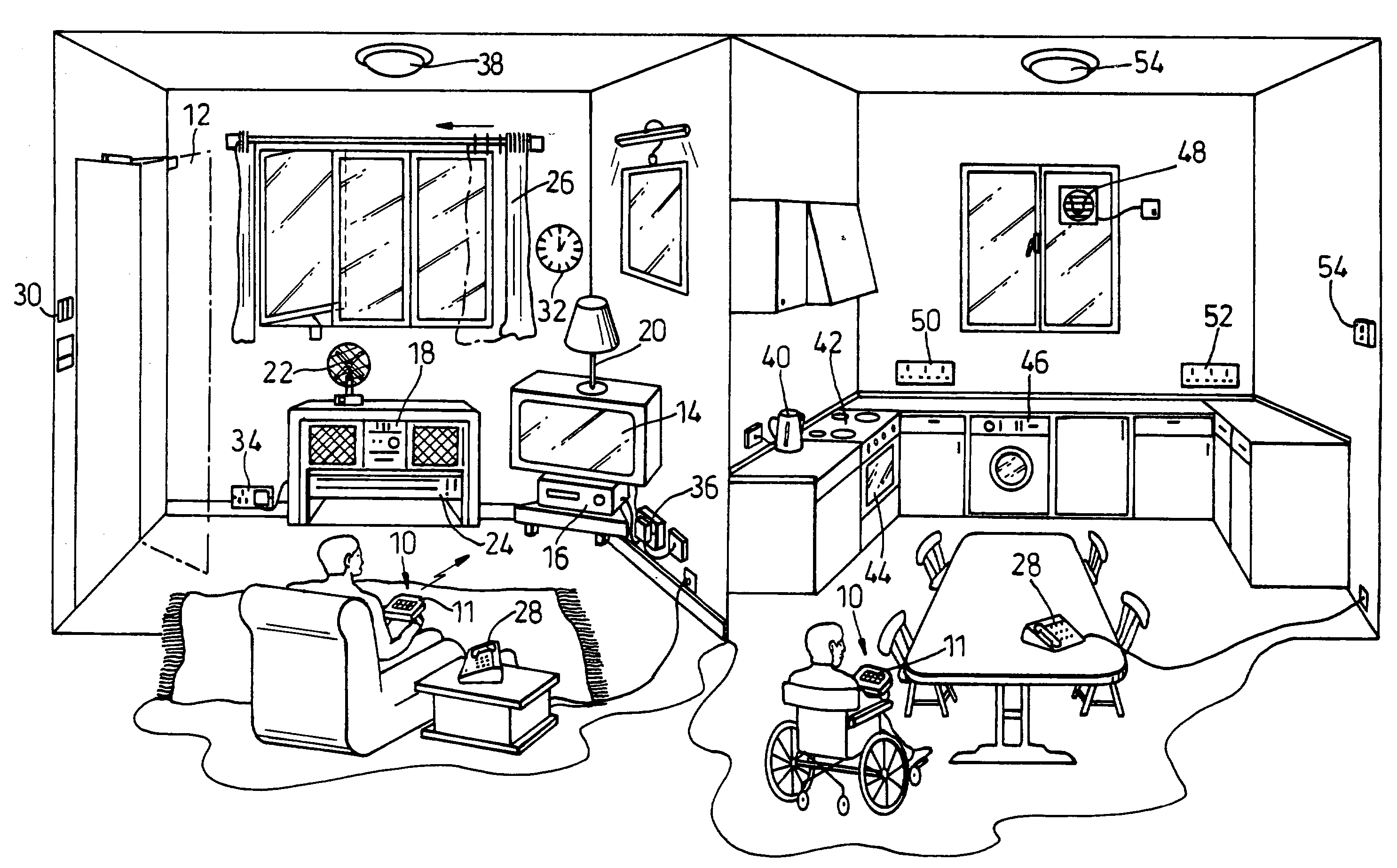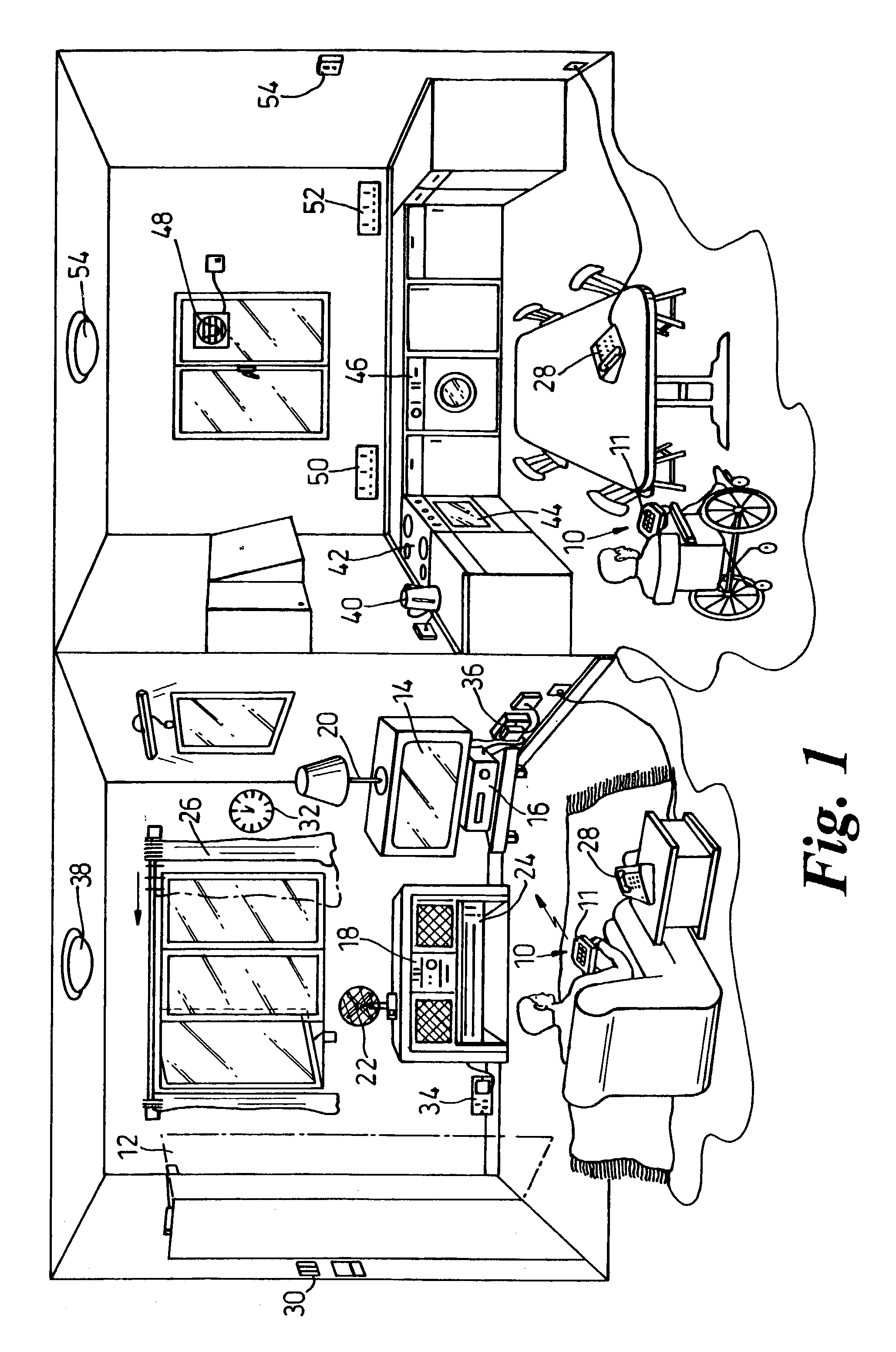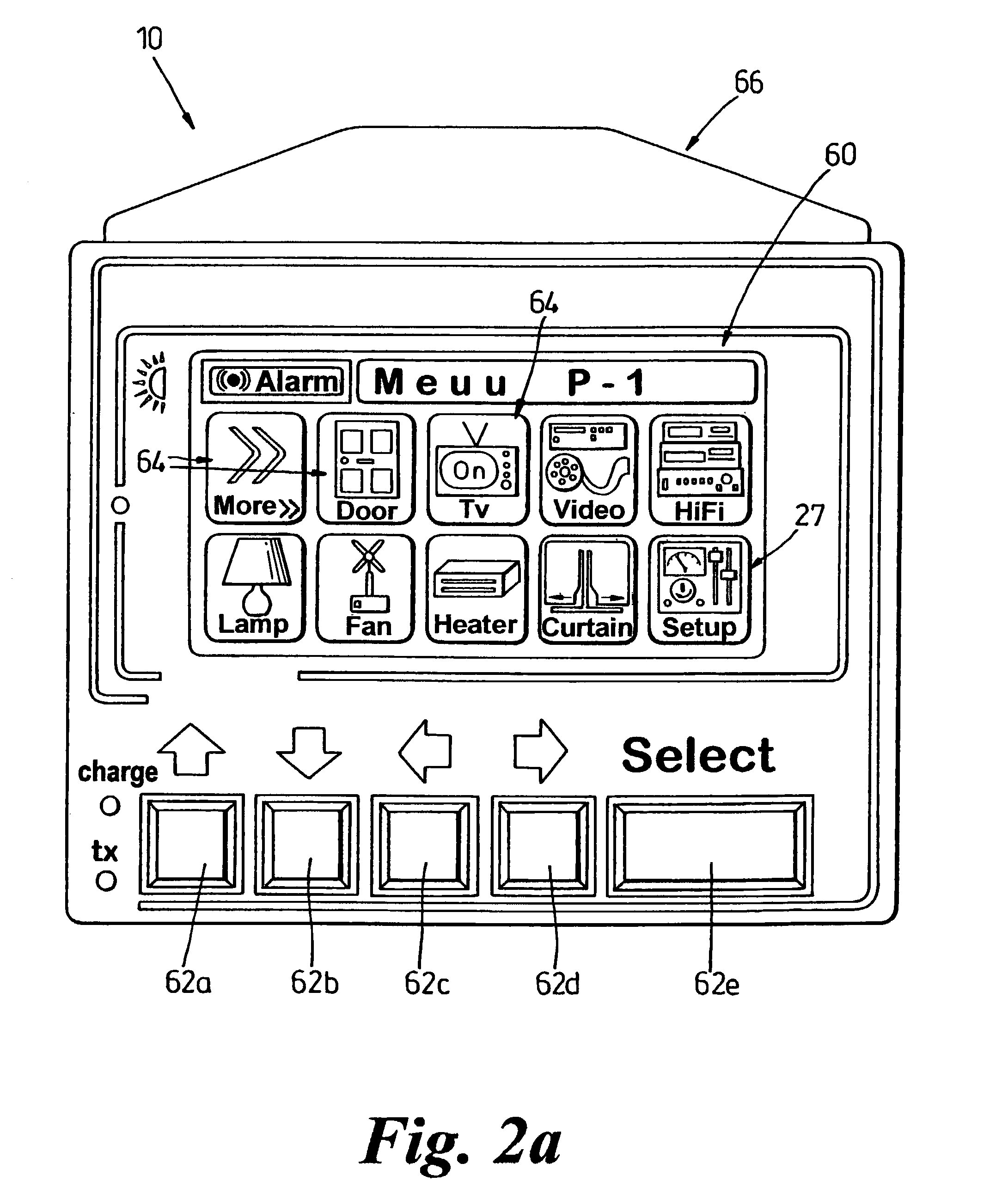Wireless communication and control system
a control system and communication technology, applied in the field of wireless communication and control systems, can solve the problems of inability to clearly define the address hierarchy, difficult to cope with people with physical disabilities in a domestic environment, and inability to take for granted actions able-bodied people take for granted, such as turning on or off lights or answering the telephone, for a great many physically disabled peopl
- Summary
- Abstract
- Description
- Claims
- Application Information
AI Technical Summary
Benefits of technology
Problems solved by technology
Method used
Image
Examples
Embodiment Construction
[0093]Reference is first made to FIG. 1 of the drawings which depicts a perspective view of part of two rooms in a house fitted with communications modules and a control system for operating a variety of appliances and devices in accordance with an embodiment of the present invention.
[0094]In the left room shown in FIG. 1, the lounge, a seated user has a control unit, generally indicated by reference numeral 10, in his lap. The control unit has a keypad 11 which allows the user to generate control signals for controlling a variety of items, such as a door 12, a television 14, a VCR 16, a HiFi 18, a lamp 20, a fan 22, a heater 24, curtains 26, a telephone 28, a room intercom 30, a clock 32, sockets 34,36 and a room light 38.
[0095]The rightmost picture of FIG. 1 shows a wheelchair seated user with a control unit 10 in his lap for controlling a variety of appliances in a kitchen, such as the telephone 28, a kettle 40, a cooker 42, oven 44, a washing machine 46, an extractor fan 48, wor...
PUM
 Login to View More
Login to View More Abstract
Description
Claims
Application Information
 Login to View More
Login to View More - R&D
- Intellectual Property
- Life Sciences
- Materials
- Tech Scout
- Unparalleled Data Quality
- Higher Quality Content
- 60% Fewer Hallucinations
Browse by: Latest US Patents, China's latest patents, Technical Efficacy Thesaurus, Application Domain, Technology Topic, Popular Technical Reports.
© 2025 PatSnap. All rights reserved.Legal|Privacy policy|Modern Slavery Act Transparency Statement|Sitemap|About US| Contact US: help@patsnap.com



